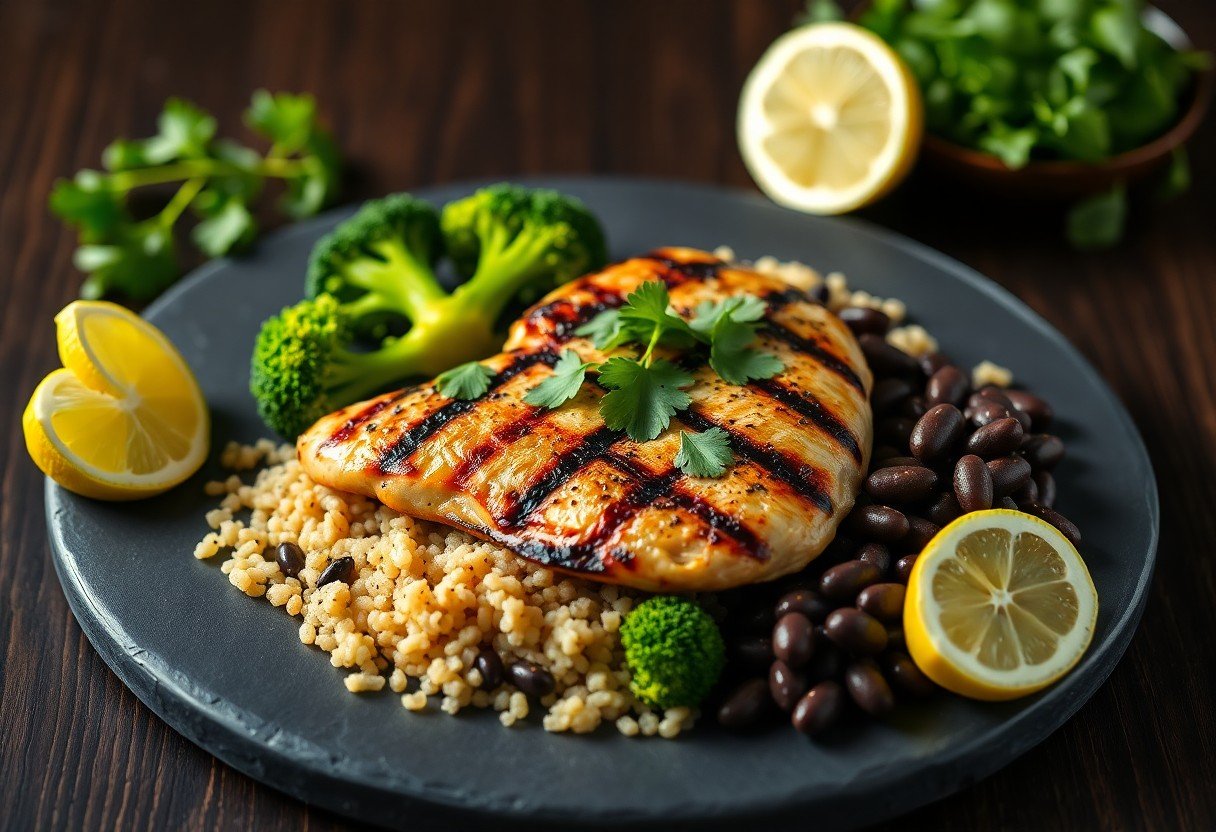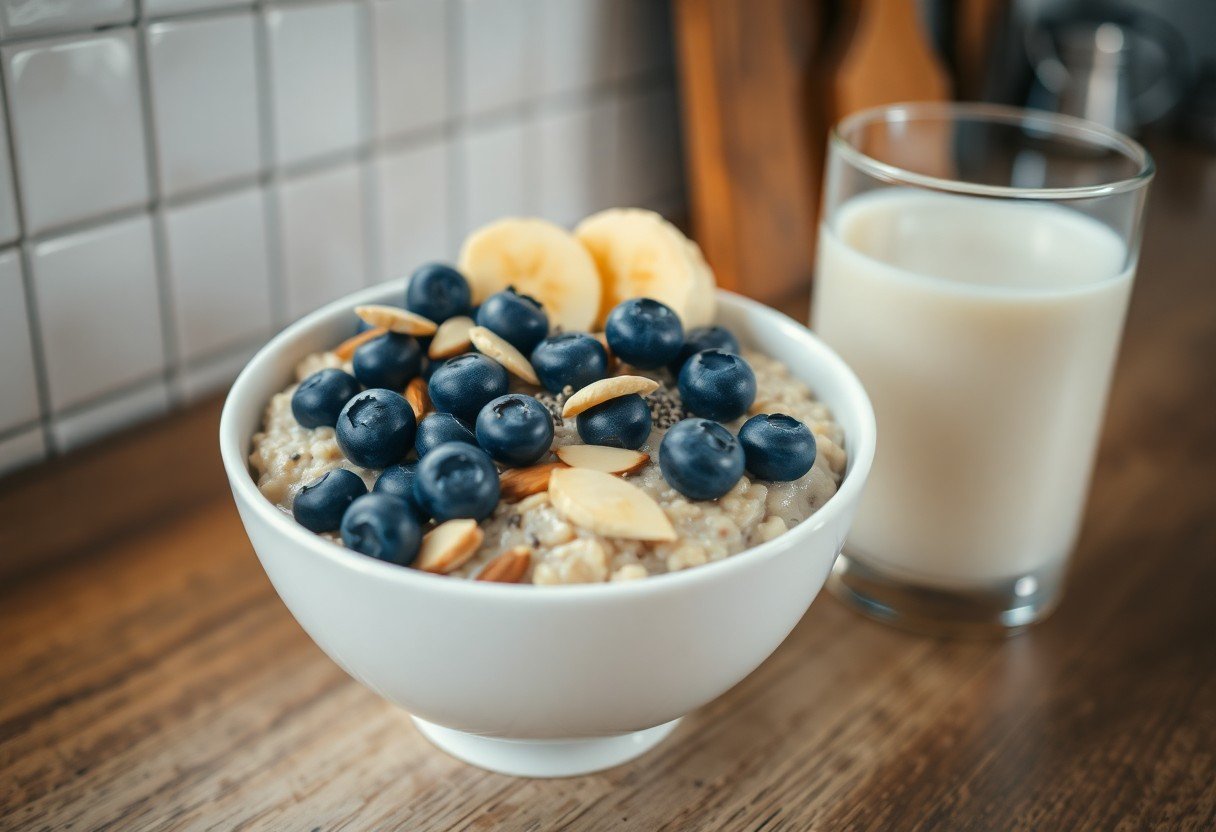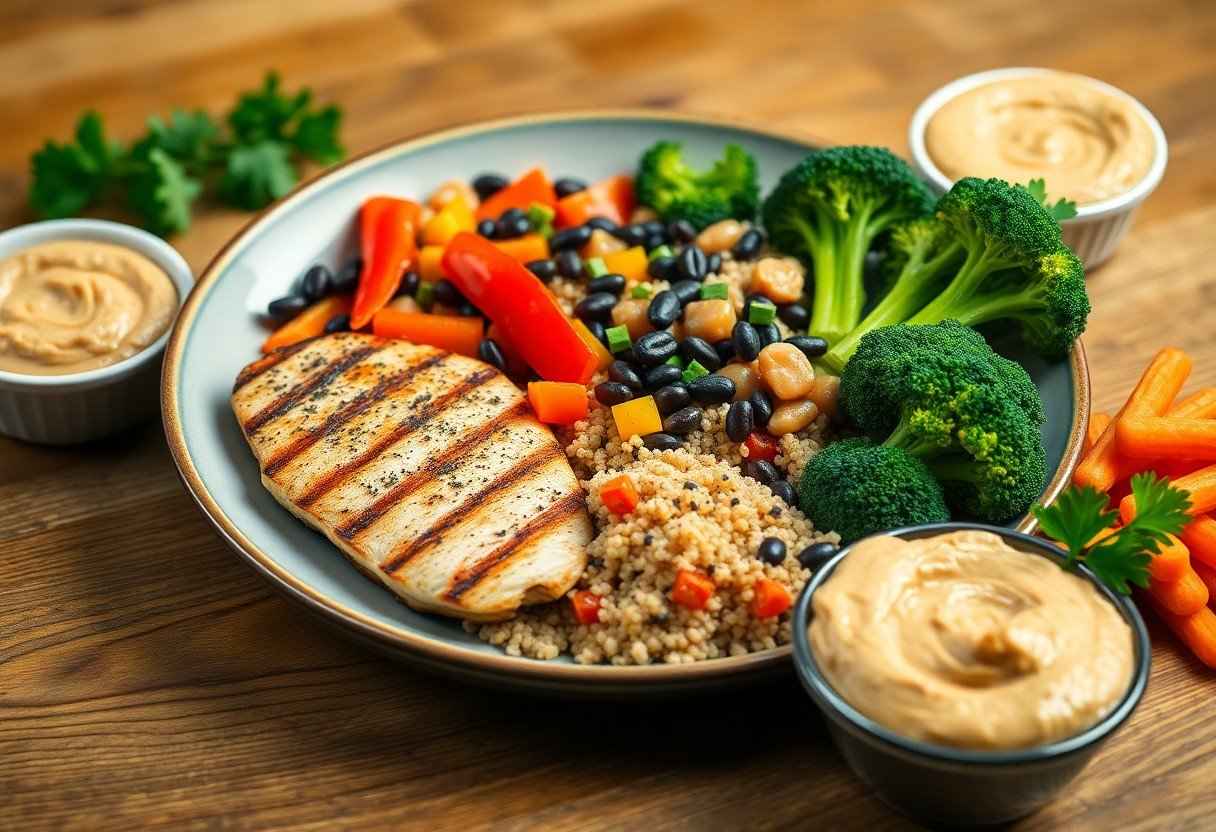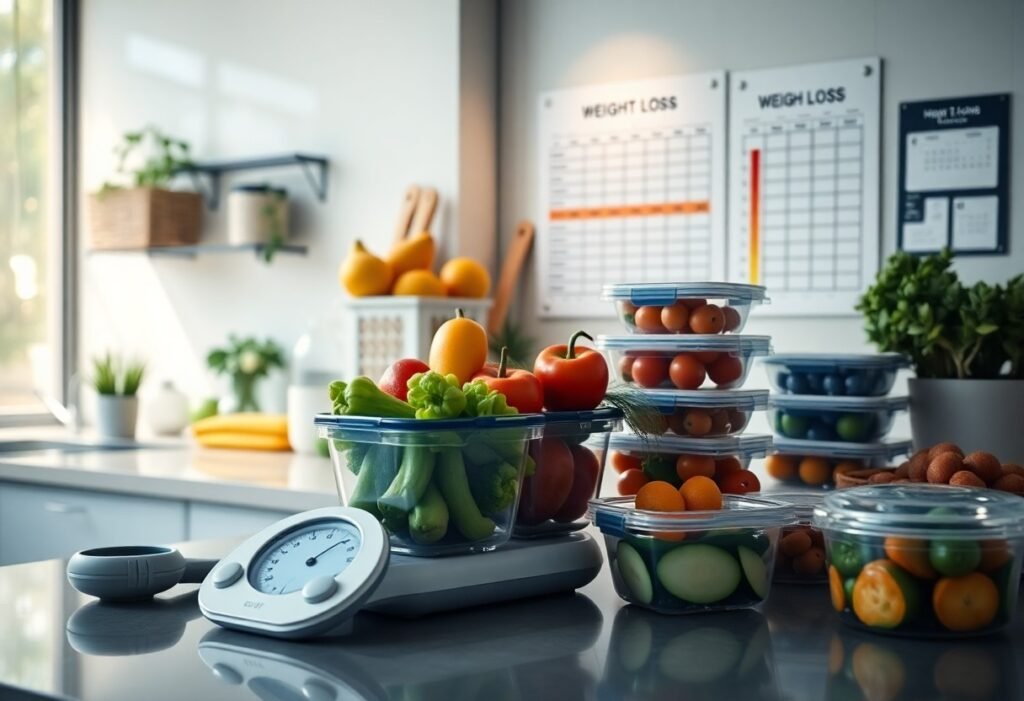Most weight-loss strategies fail due to unsustainable diets and hunger pangs. By incorporating high-protein and high-fiber meals into your daily routine, you can effectively manage your appetite while boosting metabolism. These nutrient-dense foods help maintain muscle mass and keep you feeling full longer, facilitating weight loss without deprivation. In this blog post, you will discover practical meal ideas and tips to integrate these ingredients into your lifestyle, paving the way for a healthier and more effective weight-loss journey in 2025.
Key Takeaways:
- High-protein meals support muscle retention during weight loss.
- Incorporating high-fiber foods aids digestion and promotes satiety.
- Combining protein and fiber helps regulate blood sugar levels and reduces cravings.

Understanding Protein and Fiber
The Importance of Protein
Protein is vital for your body’s repair and maintenance, especially when you’re aiming to lose weight. It plays a key role in building and preserving lean muscle, which in turn boosts your metabolism. You should aim for a varied intake of protein sources, including lean meats, legumes, and dairy, to ensure you meet your daily requirements and enhance your weight loss efforts.
The Role of Fiber
Fiber is vital for digestive health and plays a significant role in weight management. It helps you feel full longer, reducing overall calorie intake. Dietary fiber can promote a healthy gut microbiome and may lower your risk of chronic diseases. Incorporating a mix of soluble and insoluble fibers into your meals is an effective strategy for achieving lasting weight loss.
| Type of Fiber | Sources |
| Soluble Fiber | Oats, beans, apples, citrus fruits |
| Insoluble Fiber | Whole grains, nuts, vegetables, brown rice |
| Benefits | Improves digestion, aids in cholesterol management |
| Recommended Intake | 25-30 grams per day for adults |
The Science Behind Weight Loss
Caloric Deficit Explained
You achieve weight loss by creating a caloric deficit, which occurs when you consume fewer calories than your body burns. This deficit forces your body to tap into its fat stores for energy. For effective weight loss, aim for a deficit of 500 to 1000 calories per day, leading to a sustainable loss of 1 to 2 pounds each week. Monitoring your caloric intake and adjusting your diet can help you maintain this deficit.
Macronutrients and Their Impact on Metabolism
Different macronutrients-proteins, fats, and carbohydrates-play varying roles in your metabolism. For instance, protein requires more energy to digest compared to fats and carbohydrates, resulting in a higher thermic effect of food (TEF), which can enhance your overall calorie burn. Prioritizing protein intake in your meals can boost metabolic activities, aiding in weight management.
Incorporating a higher proportion of protein in your diet can significantly impact how efficiently your body utilizes energy. Due to its thermogenic effect, protein consumption can increase your resting metabolic rate, enabling you to burn more calories even at rest. For example, studies suggest that participants consuming a diet with 30% protein experienced greater fat loss compared to those on lower protein diets. This adjustment not only promotes weight loss but also helps preserve lean muscle mass during periods of caloric restriction.
The Glycemic Index and Weight Management
The glycemic index (GI) measures how quickly foods raise blood sugar levels. Foods with a low GI release glucose gradually, helping you maintain steady energy levels and curb hunger. Additionally, incorporating low-GI foods into your meals can support successful weight management by reducing cravings and preventing overeating.
Understanding the glycemic index can be a game-changer for weight management. Low-GI foods like whole grains, legumes, and vegetables help regulate blood sugar levels, leading to improved appetite control. In contrast, high-GI foods cause rapid spikes and crashes in blood sugar, making you susceptible to hunger pangs. Choosing foods with a lower GI can help you feel fuller for longer periods, making it easier to stick to your weight loss goals without feeling deprived.

High-Protein Foods for Every Meal
Animal-Based Protein Sources
Including animal-based protein sources in your meals can significantly boost your protein intake with minimal effort. Options like chicken breast, turkey, lean beef, and fish provide complete proteins, meaning they contain all necessary amino acids your body needs for muscle repair and growth. For example, a 3-ounce serving of grilled salmon delivers about 22 grams of protein, making it an excellent choice for a nutritious meal.
Plant-Based Protein Options
Don’t underestimate plant-based proteins as viable options for your meals. Foods like lentils, chickpeas, quinoa, and tofu are not only rich in protein but also provide necessary vitamins and minerals. A cup of cooked quinoa offers around 8 grams of protein along with a healthy dose of fiber, supporting your weight-loss goals.
Opting for plant-based protein sources can enhance your diet’s diversity while aiding in weight management. A blend of beans, legumes, and nuts delivers an array of nutrients, with black beans providing roughly 15 grams of protein per cup. Incorporating foods like edamame or hemp seeds can further enrich your meals, offering complete protein profiles and healthy fats. As you explore these options, pairing protein-rich plant foods with whole grains creates a balanced meal, helping you feel fuller and energized throughout the day.

High-Fiber Foods to Include
Fruits and Vegetables
Incorporating a variety of fruits and vegetables into your meals can significantly boost your fiber intake. Foods like raspberries, pears, and broccoli are particularly high in fiber, providing over 5 grams per serving. These nutrient-dense options not only keep you full but also enrich your diet with crucial vitamins and minerals, aiding in overall health while you lose weight.
Whole Grains
Whole grains are an excellent choice for increasing your fiber consumption. Foods such as quinoa, brown rice, and oats contain more fiber than their refined counterparts, often boasting around 3 to 5 grams of fiber per serving. By choosing whole grains, you enhance your meals with additional nutrients while promoting better digestion and prolonged satiety, making it easier to stick to your weight-loss plan.
Switching to whole grains can also have long-term health benefits. For instance, studies show that consuming whole grains can lower the risk of heart disease and type 2 diabetes. By incorporating foods like barley and whole grain bread, you not only increase fiber intake-improving digestive health and appetite control-but you also contribute to better cardiovascular health, supporting your fitness journey comprehensively.
Meal Planning Strategies
Balancing Protein and Fiber in Meals
To achieve effective weight loss, ensure that every meal you prepare includes a balance of protein and fiber. Aim for a combination of lean proteins such as chicken, fish, or legumes alongside high-fiber options like whole grains, beans, or vegetables. This pairing not only keeps you feeling full longer but also stabilizes blood sugar levels. Consider a meal structure where half your plate consists of fiber-rich foods and the other half contains a mix of high-protein items.
Tips for Preparing High-Protein, High-Fiber Recipes
To maximize the benefits of high-protein and high-fiber recipes, start by selecting whole ingredients and cooking methods that preserve their nutritional value. Incorporate high-protein ingredients like quinoa or Greek yogurt into your meals, and add sources of fiber such as beans or leafy greens. Experiment with spices and herbs to enhance flavor without adding calories. Perceiving the value of versatility in your ingredient choices will help you maintain variety and interest in your diet.
- Consider quinoa as a base for salads to boost protein and fiber.
- Use legumes in soups or stews for added texture and nutrition.
- Create snack options like high-protein dips with hummus and veggies.
- Engage in meal prep to streamline your cooking process, enhancing healthy eating.
When preparing your high-protein and high-fiber recipes, focus on using fresh ingredients and cutting down on processed items. Grilling, steaming, or roasting your proteins can help retain their nutritional quality. Utilize batch cooking to save time and ensure you have ready-to-eat meals throughout the week. Perceiving the importance of preparation in achieving your dietary goals will keep you motivated and on track.
- Prioritize seasonal vegetables for freshness and fiber.
- Incorporate nuts and seeds for snacking options that add both protein and fiber.
- Explore international cuisines that often highlight legumes as staple ingredients.
- Keep a food diary to monitor your protein and fiber intake effectively.
Weekly Meal Prep Guide
Creating a weekly meal prep plan will set you up for success in your journey toward weight loss. Dedicate a few hours each week to prepare basic ingredients like grilled chicken, brown rice, or roasted vegetables. Portion these out into containers for easy access during the week. Aim for a diverse menu, using different spices and cooking techniques to keep meals exciting. This practice not only simplifies your routine but also ensures you stay committed to your health goals.
In your weekly meal prep guide, consider planning out three to four core recipes that allow for variations, such as stir-fries or salads. Focus on using high-protein items like tofu or beans along with a variety of high-fiber sides such as whole grains and steamed vegetables. Having these ready-to-eat meals will prevent you from resorting to quick, less nutritious options during busy days. Perceiving this as a time-saving strategy will encourage consistency in maintaining your dietary choices.
Real-Life Success Stories
Case Studies of Successful Weight Loss
Numbers often speak louder than words when it comes to weight loss. Here are some real-life case studies demonstrating the effectiveness of high-protein, high-fiber meals:
- John, 35: Lost 40 pounds in 6 months through a diet rich in legumes and lean meats.
- Maria, 28: Dropped 30 pounds in 4 months by incorporating high-fiber snacks like chia pudding into her routine.
- David, 42: Achieved a weight loss of 50 pounds in 8 months with meal preps focused on 22 High Protein High Fiber Meals.
- Lisa, 30: Maintained a 25-pound weight loss for over a year by adhering to a balanced high-protein, high-fiber diet.
Testimonials from Nutrition Experts
Nutritionists consistently highlight the benefits of high-protein, high-fiber meals for weight loss. Experts note that this combination not only helps curb hunger but also promotes muscle maintenance during weight loss. By focusing on nutrient-dense foods, you can achieve sustainable results. Many professionals suggest adopting this dietary approach as part of a long-term lifestyle change rather than a temporary fix. The evidence supports that integrating high-fiber and high-protein foods can lead to effective weight management and overall health.
To wrap up
Taking this into account, incorporating high-protein, high-fiber meals into your daily routine can significantly enhance your weight loss journey in 2025. These meals not only help you feel fuller for longer but also promote muscle retention and boost metabolism. By focusing on whole foods rich in both protein and fiber, you create a satisfying eating pattern that supports your health and weight goals. Making this dietary shift can lead to sustainable results and improved overall well-being.
FAQ
Q: What are high-protein, high-fiber meals?
A: High-protein, high-fiber meals are dishes that emphasize protein-rich ingredients, such as lean meats, legumes, dairy, and nuts, while also incorporating fiber-dense foods like fruits, vegetables, whole grains, and legumes. These meals help promote satiety and support overall health.
Q: How do high-protein, high-fiber meals aid in weight loss?
A: They aid in weight loss by increasing feelings of fullness, reducing hunger pangs, and minimizing calorie intake. Protein requires more energy to digest, while fiber slows digestion, together contributing to reduced overall food consumption.
Q: What are some examples of high-protein, high-fiber meals?
A: Examples include quinoa salad with black beans and grilled chicken, lentil soup with spinach and turkey, overnight oats with Greek yogurt and chia seeds, and stir-fried tofu with broccoli and brown rice.
Q: How can I incorporate high-protein, high-fiber meals into my daily routine?
A: Incorporate these meals by planning ahead, preparing meals in bulk, and using versatile ingredients. Try to fill half your plate with high-fiber vegetables along with a source of lean protein at each meal.
Q: Are there any potential drawbacks to high-protein, high-fiber diets?
A: Potential drawbacks may include digestive discomfort or bloating if fiber intake is increased too quickly. It’s important to increase fiber gradually and ensure adequate hydration to support digestive health.









